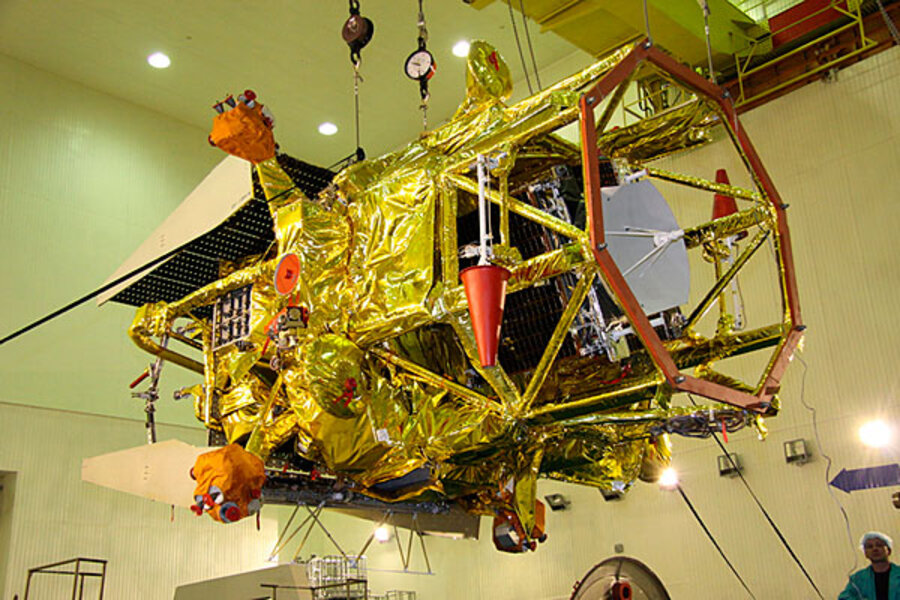Russia finds its lost Mars probe, but can mission be salvaged?
Loading...
After 17 days of silence as it orbits Earth, Russia's Mars spacecraft, Phobos-Grunt, has found its voice.
At 3:25 p.m. Eastern Standard Time Tuesday, the European Space Agency's (ESA) tracking station near Perth, Australia, picked up the first peep from the spacecraft's communications system. But communications with the craft may have come too late to send it to Mars, or to any other, closer destination, according to reports from Russia.
The craft, carrying a mini-orbiter from China and launched Nov. 9, was designed to orbit Mars's moon Phobos and return a sample of the the moon's soil to Earth. The Chinese mini-orbiter was designed to study Mars's atmosphere.
The launch and release of the craft into Earth orbit went off without a hitch. But a rocket motor designed to set the craft on a course for Phobos failed to ignite, leaving Phobos-Grunt a derelict orbiting Earth.
Ground controllers had been unable to communicate with it and troubleshoot the motor malfunction.
Some speculation about the cause of the radio blackout had centered on the the craft's orientation. Fuel tanks on the craft have blocked the path the signals would take between antennas on the ground and the antenna on the spacecraft.
In addition, ground stations didn't have orbital information accurate enough to allow them to aim their highly directional antennas with any precision, ESA officials explained on Wednesday. So ESA added a small, wider-angle antenna to its 15-meter dish near Perth to try to communicate with the craft.
As time passed without hearing from Phobos-Grunt, concerns grew that the craft's orbit would decay, leading to an uncontrolled reentry into Earth's atmosphere.
The $170-million, 14.6-ton spacecraft hosts tanks that remain fully loaded with toxic fuel. Orbital debris specialists have suggested that those tanks, as well as other structural elements on the craft, could survive the heat of reentry.
In the end, the reason for the radio blackout appears to be that the craft's transmitter was off. Russian engineers used the wide-angle antenna at Perth to transmit commands that activated the transmitter when the craft passed within the antenna's coverage zone. Phobos-Grunt returned the favor and began sending telemetry back for analysis, according to ESA.
The deputy head of Roscosmos, Russia's space agency, told the Associated Press in Moscow on Tuesday that engineers will spend the rest of the month trying to fix Phobos-Grunt and send it to Mars, although the window for leaving Earth and rendezvousing with Phobos has closed.
But Russia's news outlet RIA Novostoi quotes unnamed aerospace sources as saying the window for getting to Mars closes Monday. And the craft's control systems were not designed to maintain it in a low-Earth orbit, where it now travels.
In principle, if the craft is revived, mission planners could send it to the moon or an asteroid, according to Igor Lisov, editor of Cosmonautics News, an aerospace-industry magazine, in an interview with RIA Novostoi. But the likelihood of reviving the craft was extremely slim, he added.
Should troubleshooting efforts fail, Roscosmos officials expect it to return to Earth between late December and late February.


